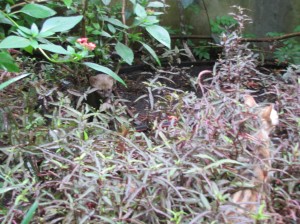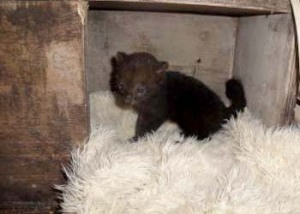So we called around to the big cat rescues we have been in touch with and asked about how we could improve the baby jaguarundi’s hunting skills. She is living with two house kittens right now and we’ve been trying to catch mice everyday to throw in their cage. The problem is that the kittens are a bit older and a bit more advanced than the jaguarundi and so they catch the mice but, when we put three mice in the jaguarundi kitten tries but usually her mouse escapes through the wire of the cage. She isn’t fast enough and sometimes we only catch two mice in a night so we put them in and only the kittens get the mice. So the new idea… let the jaguarundi out to catch mice.
The mouse population in the aviary is out of control. Every time I go in there I see mice everywhere, stealing the birdseed and the bananas we leave out for the birds. We try to put the food in places that mice would have trouble getting to but they are smart mice. So it seemed to be the perfect place to let the jaguarundi loose to learn to hunt.
We tried it yesterday morning and this morning. We let the jaguarundi out by himself at first but he just sniffed the ground and the rocks and walked very slowly and cautiously. So we put the two kittens in there with him. They didn’t exactly get mice but they learned to stalk and pounce… each other.
We tried it again this morning, first the white cat by herself. She seems to be the best hunter (we named her Artemis after the greek goddess of the hunt) so we thought that if she caught a mouse she could then show the others how. She chased the mice and caught two. Each time she ran around for a bit with them in her mouth, apparently looking for a good place to set it down. Each time she set it down in a corner, batted it around a bit, picked it up again, set it down and then it escaped. So we brought the other kitten (we named her Hestia in honor of the goddess of the hearth, also Artemis’s buddy, or so it is said) and the jaguarundi (Athena, goddess of war, buddy of Hestia and Artemis) and set them loose. They seemed to have no interest in controlling the burgeoning mouse population. Instead the pounced on each other, again and again and again. So no mice caught but maybe its good practice.


